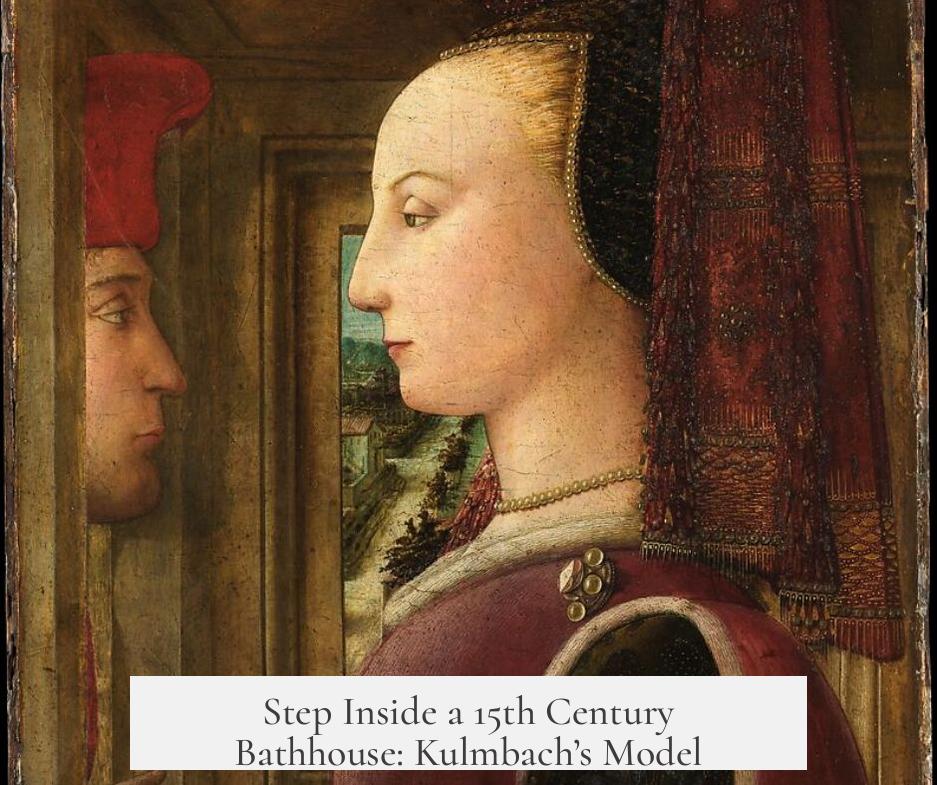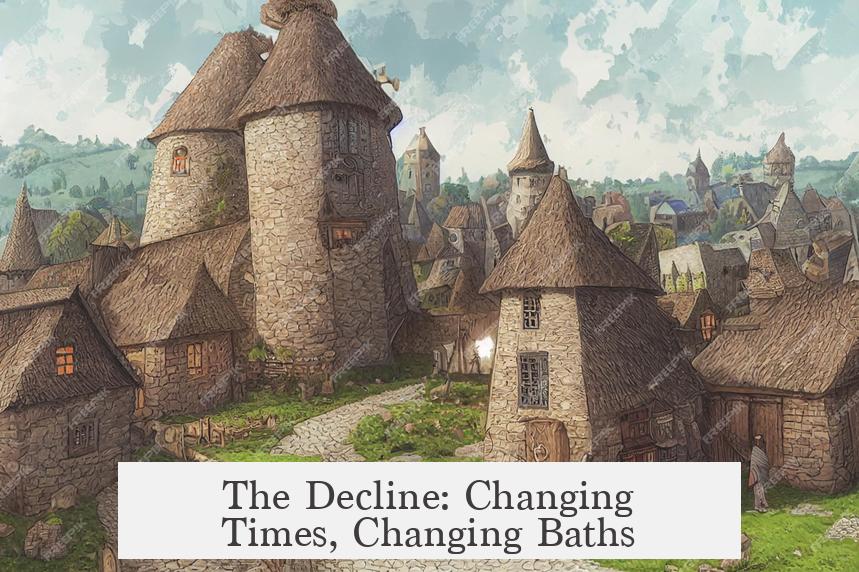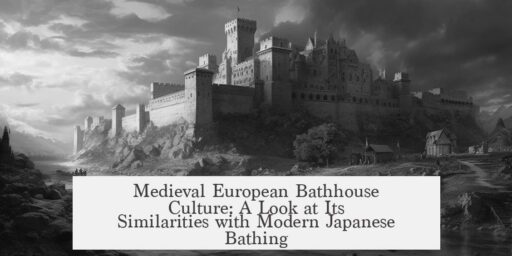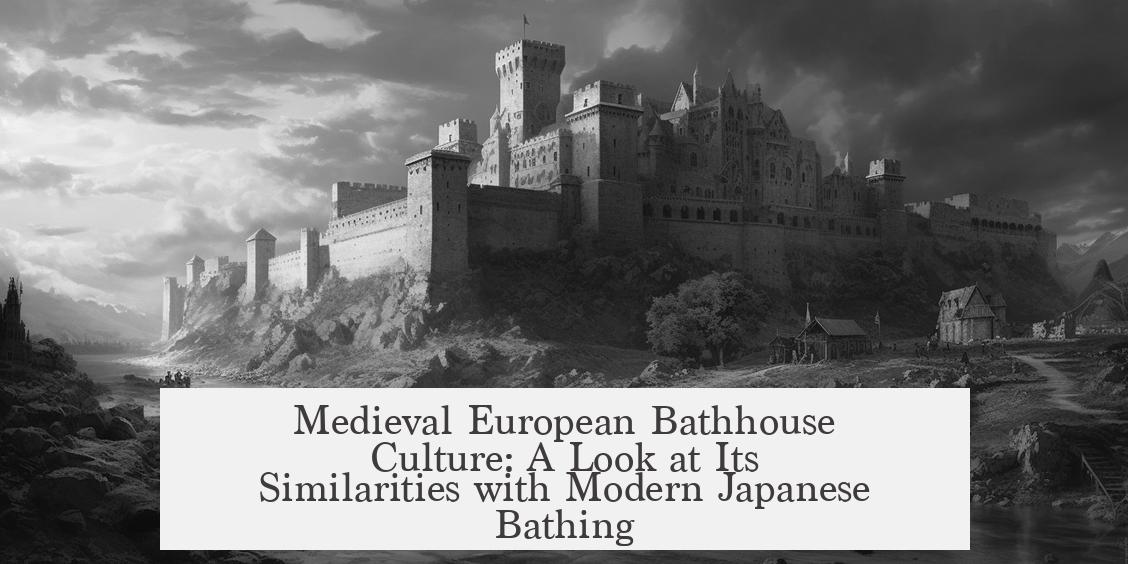European medieval bathhouse culture resembled modern Japanese communal bathing in its combination of hygiene, social, medical, and ritual functions within shared public spaces. Bathhouses served several roles beyond cleanliness. They were social hubs where people gathered for conversation, minor medical procedures, grooming, and relaxation. Regulations ensured propriety, although rumors of illicit activities circulated. The experience emphasized physical cleansing, circulation stimulation, and communal interaction.
Medieval bathhouses existed in every larger village and town. They functioned as basic public facilities supporting daily hygiene and social life. Visitors entered a sequence of bathing areas starting with the “pre-bath,” which involved warm water showers supplied from a nearby boiler room. This pre-bath stage included a distinctive practice: bathers were gently beaten with birch twigs to stimulate blood circulation—a tradition that continues today in Finnish sauna culture.
Following the pre-bath, attendants cleaned bathers with cloths or sponges, preparing them for deeper bathing rituals. Guests could enter large wooden tubs for full immersion baths, either individually or in groups. Food and drinks were available, reinforcing the bathhouse as a convivial gathering place.
Alternatively, visitors could choose a sweat bath akin to saunas. This area featured wooden platforms arranged in stair-like tiers, accommodating groups for relaxation and heat exposure. The sauna infrastructure was sophisticated, including a stone barrel vault protecting the wooden ceiling from smoke and heat. Large pebbles heated in a vaulted brick chamber stored thermal energy, and pouring water over these stones created steam, similar to modern sauna infusions.
The bathhouse staff also provided ancillary services uncommon in many modern settings but standard then. These included shaves and haircuts given on lower platforms within the sauna or bathing space. This multi-use design maximized efficiency and social interaction.
After bathing, visitors moved to dedicated rest rooms. These change and relaxation areas offered comfortable loungers where bathers could cool down and socialize further. These zones extended the bathhouse’s role as a communal retreat improving physical and mental well-being.
Bathhouses doubled as centers for basic medical treatment. Minor procedures like tooth extraction, bloodletting, wound care, and tincture preparation were conducted on-site, reflecting the bathhouse’s integration into broader health practices in medieval society.
Despite rumors associating bathhouses with prostitution, historical regulations demonstrate strict control by church and state authorities. Laws mandated gender separation in either time or space within bathhouses and explicitly forbade prostitution. Nevertheless, some individuals occasionally flouted these rules.
These occasional deviations, rather than reflecting the norm, contributed to legends and sensational accounts amplified by society and later writers. The cultural stigma around such activities sometimes overshadowed the primary communal and hygienic functions of bathhouses.
| Aspect | Description |
|---|---|
| Social Role | Meeting place for gossip, socializing, and shared relaxation |
| Bathing Rituals | Pre-bath with warm water, birch twig beating, cleansing, full baths, sauna |
| Medical Treatment | Minor surgeries, bloodletting, wound care performed on-site |
| Additional Services | Shaves and haircuts offered by bath attendants |
| Regulation | Gender separation, prohibition of prostitution, church and state oversight |
| Sauna Setup | Stone barrel vault, heated pebbles, steam infusion, wooden tiers for seating |
European medieval bathhouses shared parallels with Japanese bathing culture through their public nature and social emphasis. Both emphasized cleansing, relaxation, circulation stimulation, and communal engagement, all embedded within regulated environments.
- Bathhouses combined hygiene, social interaction, medical treatment, and grooming.
- Rituals included regular steaming, warm showers, birch twig beating, and shared baths.
- Facilities were structured for comfort, including sauna-like chambers with steam and heated stones.
- They operated under strict regulations to maintain morality and separation of genders.
- Medical and grooming services were integral to the bathhouse experience.
The Medieval European Bathhouse Culture: An Unexpected Parallel to Modern Japanese Bathing

Heard medieval European bathhouses resembled Japanese onsen culture? Absolutely. The similarities are striking when you dig beneath the surface of history—and yes, there was way more to those bathhouses than just washing up.
Let’s take a dive into how these bathhouses functioned, what drew people there beyond hygiene, and how their culture evolved, with some spicy facts that might surprise you.
A Hub Beyond Cleanliness: What Bathhouses Really Offered
Picture a medieval German village. It’s bustling, but the soap isn’t flowing from every faucet like today. Bathhouses served as vital communal spaces. Sure, they were about cleanliness, but their role went far deeper. People came for haircuts, shaves, medical care, and good old-fashioned gossip.
Interestingly, these bathhouses were mini health centers. Bloodletting, teeth extraction, wound treatment, and even making tinctures took place inside these steamy walls. It wasn’t uncommon for someone feeling under the weather to pop in for a quick remedy or advice alongside a soak.
Essentially, the bathhouse doubled as a wellness hub, social club, and village clinic—the ultimate multitasker of medieval days.
The Archaeological Trail: Bathhouses Left Their Mark
Not just legends, numerous bathhouses have popped up during archaeological digs. One notably intact example lies in Nuremberg’s Irrerstraße. Trockau in Bayreuth boasted two baths in 1472 alone. Streets named Badstraße (“Bath Street”) still trace the memory of these institutions across Europe.
These findings underline how deeply embedded bathhouse culture was in medieval life. It wasn’t a fringe activity but a community cornerstone, much like public baths in Japan today.
Step Inside a 15th Century Bathhouse: Kulmbach’s Model

The Kulmbach bathhouse, founded in 1398, is a vivid example. Guests enter and stroll an L-shaped corridor to the changing rooms, where benches and beds await for post-bath relaxation. Already sounds cozy, right?
Before jumping into the bath, a pre-bath ritual kicks off: warm water showers supplied by a nearby boiler room. Here, bathers get gently beaten with birch twigs—a tradition familiar to Finnish saunas even now—that stimulates blood flow.
Next, cleansing with cloths or sponges follows. After being sudsed, visitors choose between two options: a sit-down, communal wooden tub bath or a steam sauna. Food and drink service? Naturally. This was a social activity, not a chore.
The Sauna Experience and Services
The sauna area is fenced off with stone to protect the delicate wooden ceilings. Hot stones sizzle in a heating chamber, and bathers pour water over them, creating invigorating steam. The experience must have been intense, similar to modern Japanese bathhouses using hot stone baths and steam rooms.
Here’s a twist: attendants also offered shaves and haircuts on the lower seating steps. Imagine getting a trim or shave while letting off steam. Talk about multitasking in medieval style.
Post-Bath Peace
After the heat, bathers return to the relaxation room to cool down on loungers. This post-bath calm resembles the ‘yukimi’ moment in Japanese onsen visits: resting in quiet warmth to let the body and mind settle.
The Decline: Changing Times, Changing Baths

From the 16th century, wood prices soared, making bathhouses expensive to operate. Wealthier folk began installing private baths, and public visits declined. By the 18th century, most bathhouses had shuttered, the Kulmbach facility closing in 1806.
It’s fascinating how economic factors and social shifts reshaped this once vital cultural institution.
Busting the Prostitution Myth
The bathhouse-prostitution link is popular but overstated. Strict regulations from church and state often prohibited any such activity. Bathers were separated by gender in time or space to maintain decorum.
Sure, some naughty exceptions existed—human nature never sleeps—but these were exceptions, not the rule. The very rarity of such ‘frivolous’ activities made them scandalous gossip fodder, much like rumors around certain modern spas or gyms.
What Can Modern Bathers Learn from Medieval European Baths?
- Social Connection: Bathhouses were meeting points, not just bathing spots. Mixing cleansing with conversation is a timeless recipe for community bonding.
- Holistic Wellness: Featuring minor medical treatments alongside bathing shows medieval Europeans saw cleanliness tied closely to health and wellbeing.
- Ritual and Relaxation: Pre-bath beating with birch twigs and post-bath lounge time echo the thoughtful structure found in Japanese bathing rituals. This shows the power of tradition in making bathing restorative.
- Multi-Use Facilities: Combining shaves, haircuts, and medical care with bathing made the bathhouse efficient and indispensable.
Final Thought
European medieval bathhouses were cultural marvels that balanced hygiene, health, and social life. They echo Japanese bathing culture, with rituals designed to cleanse body and soul, foster community, and even offer some pampering.
Next time you soak in a hot tub or visit a spa, think about this centuries-old tradition. The idea of bathhouses as multi-purpose wellness centers clearly isn’t new—medieval Europeans were soaking smart long before us.




